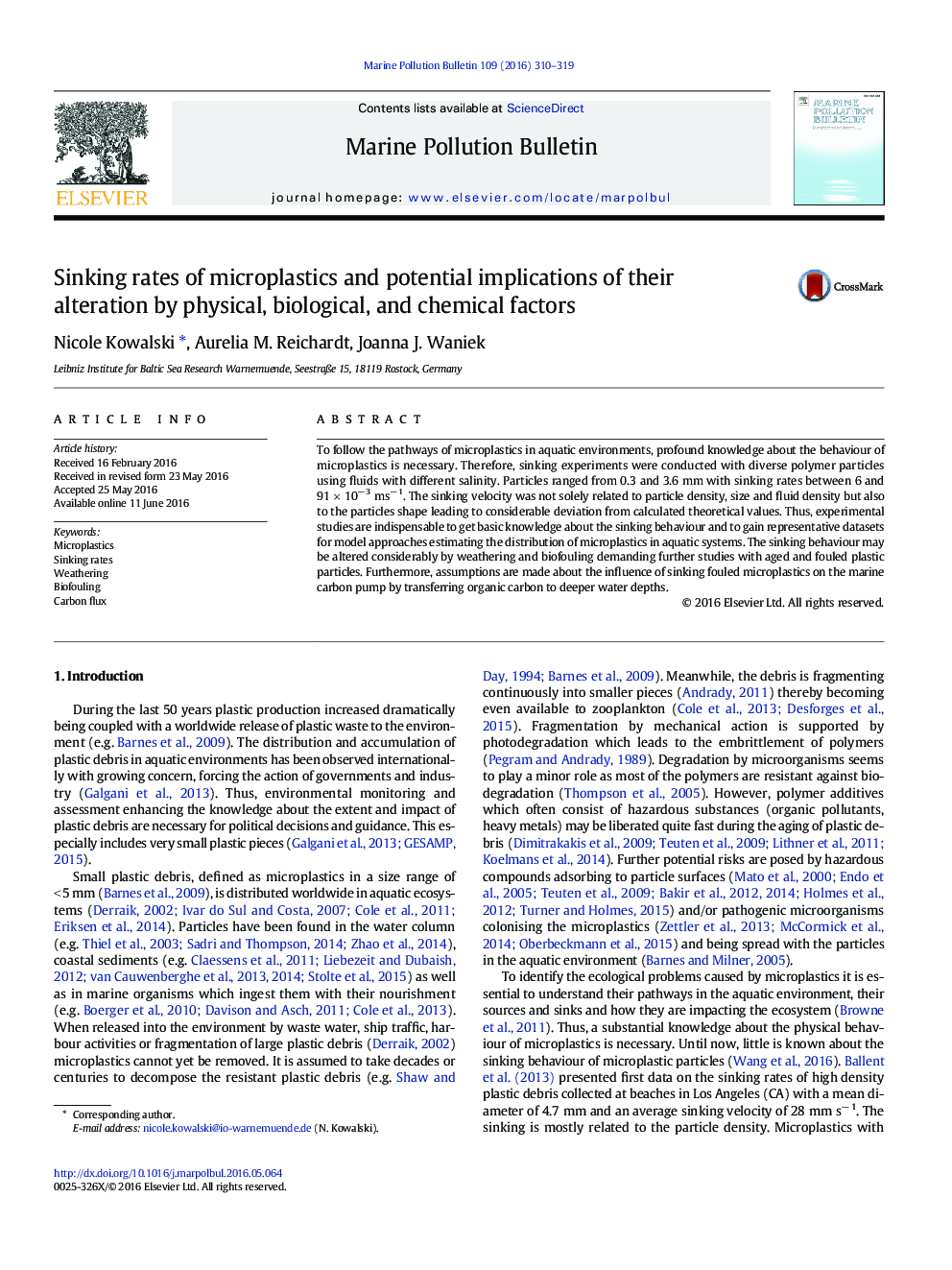| Article ID | Journal | Published Year | Pages | File Type |
|---|---|---|---|---|
| 4476405 | Marine Pollution Bulletin | 2016 | 10 Pages |
•Sinking velocities of microplastics are determined by particle density, size and shape as well as fluid density.•Observed sinking velocities deviate distinctly from theoretical estimates.•Sinking behaviour of microplastics may be altered by weathering and biofouling.
To follow the pathways of microplastics in aquatic environments, profound knowledge about the behaviour of microplastics is necessary. Therefore, sinking experiments were conducted with diverse polymer particles using fluids with different salinity. Particles ranged from 0.3 and 3.6 mm with sinking rates between 6 and 91 × 10− 3 ms− 1. The sinking velocity was not solely related to particle density, size and fluid density but also to the particles shape leading to considerable deviation from calculated theoretical values. Thus, experimental studies are indispensable to get basic knowledge about the sinking behaviour and to gain representative datasets for model approaches estimating the distribution of microplastics in aquatic systems. The sinking behaviour may be altered considerably by weathering and biofouling demanding further studies with aged and fouled plastic particles. Furthermore, assumptions are made about the influence of sinking fouled microplastics on the marine carbon pump by transferring organic carbon to deeper water depths.
